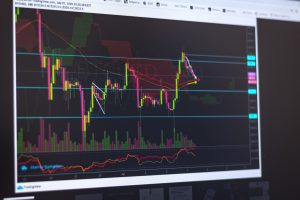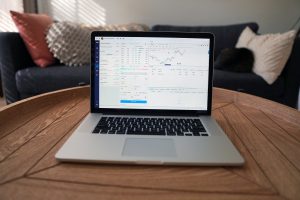CFDs are deals between financial organizations and investors where the latter assumes a position on an asset’s future value. While trading CFDs can be risky, its potential benefits overpower the affiliated market, counterparty, liquidity, money, and client risks.
CFD trading risks can also escalate due to other factors such as the need to retain enough margin due to leveraged losses, lack of liquidity, and inadequate industry regulation. Many CFD traders that profit from this venture have a wealth of experience.
How do CFDs work?
CFD is an advanced trading strategy that only experienced traders engage in. It neither involves securities nor the delivery of tangible goods. While CFD investors own the fundamental asset, they receive revenue depending on how its price changes. For instance, instead of purchasing or disposing of physical gold, traders can speculate whether gold prices will increase or drop.
Investors leverage CFDs to place bets on whether or not the price of fundamental security or assets will increase or drop. Traders can predict an upward or downward movement. Suppose a trader has purchased a CFD and the asset’s price starts rising; they can surrender their holding to the market. The only difference between the buying price and the selling price is linked. The net difference exhibiting the earnings from trades is resolved via the investor’s brokerage account.
If a trader predicts a drop in value, they can activate an opening sell position. The trader should buy an offsetting trade to complete the position. In this case, the absolute loss difference is cash-resolved via their account.
In which Countries are CFDs Legal?
CFD trading is banned in the US. However, CFDs are legalized in OTC (over-the-counter) markets in various trading countries, including the UK, Switzerland, Germany, Spain, Singapore, South Africa, France, Netherlands, and Denmark.
CFD trading is also allowed in Australia, where the ASIC (Australian Securities and Investment Commission) has introduced changes in the CFD issuance and distribution to retail clients. The institution aims to enhance consumer protections by targeting CFDs sales practices and features that magnify CFD retail clients’ losses. ASIC also seeks to limit the CFD leverage that retail clients enjoy. ASIC’s product arbitration order began on 29th March 2021. While the SEC (Securities and Exchange Commission) has restricted CFD trading in the US, non-residents can still trade with them.
Benefits of CFDs
· Higher Leverage
CFDs offer higher leverage than conventional trading. Standard leverage in the CFD trading market is often regulated. Initially, the maintenance margin was as minimal as 2%, which is equal to 50:1 leverage. However, it is today limited in a 3% range or 30:1 leverage and can rise to 50% or 2:1 leverage. Reduced margin requirements suggest less capital investment for the trader and more potential returns. Still, higher leverage can intensify a trader’s losses.
· International Market Access from a Single Platform
Many CFD brokers have products in every primary market globally, allowing round-the-clock access. Investors can engage in CFD trading on vast international markets.
· No Borrowing Stock or Shorting Rules
Some markets have regulations that forbid shorting and require traders to borrow the asset before disposing of short. These markets may also have varying margin requirements for long and short positions. Traders can short CFD assets any time with no borrowing restrictions seeing that they do not own the fundamental asset.
· Free Professional Execution
CFD brokers and their traditional counterparts offer similar order types, including limits and stops. They also offer contingent orders like if done and one nullifies the other. Some brokers providing guaranteed stops either charge a small fee for the service or recover costs through other methods.
Brokers earn money when traders settle the spread. They also charge fees or commissions occasionally. To purchase, traders should settle the ask price, and to short or sell; a trader must settle the bid price. This spread can be large or small based on the underlying asset’s volatility. Fixed spreads are also available.
· No Day Trading Obligations
Some markets need minimum capital to either activate limits on the number of day trades that traders can make with particular accounts or day trade. The CFD trading market does not feature these limitations. Account-holders can engage in day trading as much as they want. Aspiring traders can open an account for $1,000, but $2,000 and $5,000 are popular minimal deposit requirements.
Finally
CFD trading can be risky even though its advantages overpower the risks. Research widely and practice on a demo account before engaging in live trading. Doing so will limit your risk.






More Stories
What are cryptocurrency exchange-traded funds?
How to implement contrarian strategies?
Demo Account and The Choice of a Forex Broker